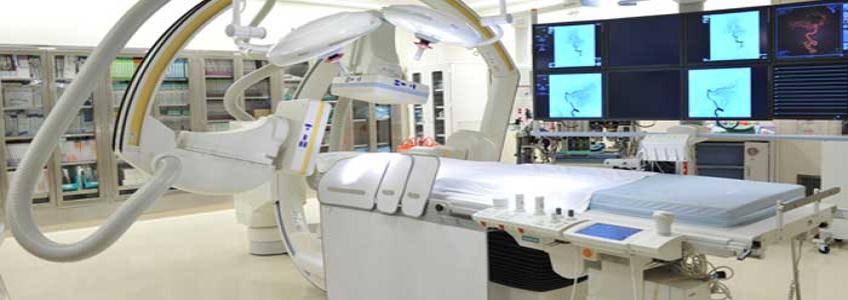In this report, the neurovascular interventions market encompasses embolization, revascularization, mechanical thrombectomy, and access/support devices.
In 2013 in the 10MM, the neurovascular interventions market was approximately $1.37bn. We estimate the 2014 sales of neurointerventional devices for cerebrovascular applications to be $1.40bn across the 10 countries covered in this report, which are the US, France, Germany, Italy, Spain, the UK, Japan, China, India, and Brazil. Embolization, revascularization, and mechanical thrombectomy devices can be used for a wide range of cerebrovascular indications including intracranial aneurysms and arteriovenous malformations (AVMs), dural arteriovenous fistulas (DAVFs), atherosclerotic disease, and stroke. Endovascular therapy for neurovascular applications is rapidly expanding and provides effective results.
The key drivers for this market during the forecast period are:
- The rising prevalence of cerebrovascular disease and its associated risk factors in the major markets covered in this report.
- The need for effective therapies that reduce the risk of hemorrhagic and stroke complications, and ensure long-term, reliable outcomes.
- The improved outcomes with endovascular coiling for intracranial aneurysm treatment compared with surgical therapy.
- The increased use of remodeling techniques such as stent-assisted and balloon-assisted coiling, and the adoption of flow diverters for the treatment of challenging/complex aneurysms (wide-neck, large, and giant aneurysms).
- Improved recanalization rates with mechanical thrombectomy systems, where the need for chemical thrombolysis is eliminated, thereby reducing the risk of intracranial hemorrhage.
- The cost savings for healthcare payers resulting from the reduced need for repeat procedures.
- The increase in patients’ disposable income and government insurance coverage in the emerging markets, such as China and India.
- The approval and launch of the next-generation of innovative embolization, revascularization, and mechanical thrombectomy devices in the US and Japan.
Combined, the US, five European Union countries (5EU) (France, Germany, Italy, Spain, and UK), and Japan, account for approximately 80% of the neurointerventional market for cerebrovascular applications.
The US is forecast to have the largest market share in the market, followed by Japan, and then collectively, the 5EU. Innovative technologies such as flow diverters and stent retrievers have not received regulatory approval and been launched in the Japanese market. Stent retrievers and flow diverters are expected to enter Japan beginning in 2015. In the 5EU, Germany and France are leading the way in the market and have the largest forecast market shares in 2020. In the emerging markets, China has the largest market share, followed by Brazil. These emerging markets are an outlet of expansion and a source of additional revenue for neurointerventional device manufacturers.
Global Neurovascular Interventions Market in the 10 Major Markets:
The global neurovascular interventions market in the 10MM is a vast, double-digit market that consists of innovative and emerging technologies. Rapid advances in the field of neurovascular interventions along with the development of minimally invasive techniques have greatly expanded the potential of therapeutic applications. Embolization devices including bare metal and bioactive/coated coils, aneurysm remodeling devices (stents and occlusion balloons), flow diversion devices, and liquid embolic agents can be used to treat intracranial aneurysms and AVMs, and optimize outcomes. Low-profile stent and balloon systems can be used to revascularize plaque-burdened arteries in the cerebrovasculature. Mechanical thrombectomy devices including distal and proximal devices and stent retrievers can improve recanalization rates and provide predictable outcomes in the setting of acute ischemic stroke (AIS). In addition, the next generation of access/support devices such as microcatheters, steerable guide catheters and guidewires, and distal access guide catheters has been developed to improve navigation, trackability, and flexibility as well as provide stable access, especially through tortuous anatomy.
In 2013, the global embolization, revascularization, and mechanical thrombectomy device markets were estimated to be approximately $640m, $340m, and $50m, respectively. The access/support devices market was estimated to be approximately $350m in 2013. The embolization and mechanical thrombectomy device markets present greater opportunity and potential for growth. The embolization device market has the largest share in the global neurovascular interventions market, accounting for over 40% of the market.
Although the mechanical thrombectomy market is approximately seven to 14 times lower than the embolization and revascularization markets, the mechanical thrombectomy market is expected to demonstrate the greatest growth. The revascularization market is forecast to have the lowest growth in the market.
Unmet Needs Remain a Challenge:
Management of patients with intracranial aneurysms and AVMs, atherosclerotic disease, and stroke is complex and challenging, reiterating the need for effective therapies. There are many dimensions in the struggle to provide better care for patients with cerebrovascular disease including: a lack of physician practice, performance, and training guidelines; complications of surgical therapy such as cerebral artery bypass and aneurysm clipping; treating challenging indications such as AVMs and stroke; a lack of clinical data; and improve ease of access in tortuous vasculature.
The neurointerventional field would greatly benefit from multispecialty and multinational collaboration on developing guidelines on effective treatment practices and strategies for various cerebrovascular indications. For example, the optimal treatment strategy for unruptured intracranial aneurysms (UIAs) remains undefined. In addition, complex aneurysm morphologies and sizes such as wide-neck, wide-neck bifurcation, and large and giant aneurysms are challenging to treat due to the high recanalization rates and severe periprocedural complications. Intracranial AVMs are one of the most challenging indications to treat given the lack of curative therapies. AVMs are characterized by a complex angioarchitecture, where the timing of development and the nature of the lesion is not well understood. Currently, there is no single treatment that has been proven to be effective for treating intracranial AVMs.
Minimally invasive techniques including stenting and balloon angioplasty can be used to open occluded arteries and restore normal blood flow. However, there are post-procedural complications such as thrombosis, chronic inflammation, and in-stent restenosis (ISR) associated with stenting. In addition, the need for prolonged dual antiplatelet therapy can increase the risk of bleeding and incur additional costs to healthcare providers. Also, the management of AIS has been a source of frustration and dismay for physicians and patients alike, given the lack of effective treatments. Conventional therapy for treating AIS consists of chemical thrombolysis with intravenous (IV) administration of a thrombolytic agent. IV thrombolysis is limited by low rates of complete recanalization and increased risk of intracranial hemorrhage, often leading to poor outcomes
Given the challenges in treating the various cerebrovascular indications, device manufacturers need to develop effective therapies that ensure long-term outcomes and increase patient safety. Neurovascular interventions using embolization, revascularization, and mechanical thrombectomy devices can reduce the risk of complications such as hemorrhage and thromboembolism, and improve outcomes. The development of innovative devices such as flow diverters has enabled treatment of complex aneurysms that otherwise would be left untreated.
Key Players in the Global Neurovascular Interventions Market in the 10 Major Markets:
The global neurovascular interventions market in the 10MM is a dynamic market dominated by key players such as Covidien, Johnson & Johnson (J&J), Stryker Corporation, Terumo Corporation, Penumbra, and BALT Extrusion. The competitive landscape consists of large, mid-size, and small companies that have developed various neurointerventional devices to target cerebrovascular disease. The key players in the market have developed a broad and comprehensive portfolio of neurointerventional devices for various cerebrovascular indications ranging from the treatment of complex intracranial aneurysms to AIS.
GlobalData believes that as the next generation of neurointerventional devices enters the market, the current key players will need to retain and acquire market share by improving the clinical performance of their existing products. In addition, the current players need to expand into, or increase their presence in the emerging markets, in order to take revenue away from their competitors in the future.
Global Neurovascular Interventions Market Future Outlook in the 10 Major Markets:
The neurovascular interventions market in the 10MM is a vast and dynamic market that enables medical device companies to customize and develop innovative platforms for a variety of cerebrovascular indications/segments. The rapid advancements in the field of neuroendovascular therapy have led to the development of innovative embolization, revascularization, mechanical thrombectomy, and access/support devices.
Among the embolization devices, embolic coils will continue to be widely adopted for intracranial aneurysm treatment given the extensive clinical experience with such devices, and their use in both ruptured and unruptured aneurysms. Innovative coils have been developed to provide increased packing density, conformability, and stability. Liquid embolic agents such as Onyx have been, and will continue to be adopted to embolize intracranial AVMs. The adoption of emerging technologies such as flow diverters will increase only slowly in the future and is expected to take market share away from the stent-assisted and balloon-assisted coiling markets. However, the use of flow diverters is limited to niche aneurysm indications such as wide-neck, large, and giant aneurysms. In addition, the high cost of flow diverters compared with coils and remodeling devices, as well as a lack of reimbursement in countries such as Brazil, will hinder the widespread adoption of flow diverters.
Outcomes of the Stenting and Aggressive Medical Management for Preventing Recurrent Stroke in Intracranial Stenosis (SAMMPRIS) clinical trial demonstrating a lack of superior clinical performance of endovascular therapy versus medical therapy has limited the use of stents for treating intracranial stenosis. Stenting and balloon angioplasty are primarily performed in the setting of carotid artery stenosis. Low-profile stent systems have been designed to improve flexibility, radial strength, and conformability. Although innovative stent/balloon technologies with integrated embolic protection have been developed, GlobalData questions the widespread adoption of such revascularization devices in the future, given the lack of clinical data and appropriate reimbursement in countries such as the US and Brazil. However, in China, the procedure volume for stenting is much higher than in the US and EU and can be attributed to physician clinical experience and expertise, as well as a high prevalence of disease.
For AIS, mechanical thrombectomy devices provide higher recanalization rates and lower complication rates than IV thrombolysis. Stroke is a large market where there is a clinical need for effective therapies with predictable outcomes. Mechanical thrombectomy devices such as stent retrievers and proximal thrombectomy devices are primarily used in clinical practice. Stent retrievers have become the primary choice for devices used in mechanical thrombectomy procedures and will be widely adopted in the future. Due to technical challenges, while proximal aspiration thrombectomy devices such as the Penumbra System can reduce the risk of embolic events, they are used less often in clinical practice compared with stent retrievers.






